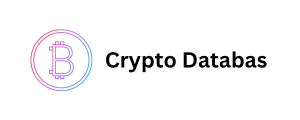Set Up Python Project: A Comprehensive Guide
Are you looking to set up a Python project but not sure where to start? In this article, we will provide you with a detailed guide on how to set up a Python project from scratch. By following these steps, you will be able to create a structured and organized Python project that is easy to maintain and build upon. So, let’s dive in and get started!
Before we dive into the actual setup process, let’s first understand Introduction to a Python project entails. A Python project is a collection of code files, libraries, and resources that work together to achieve a specific goal. Whether you are working on a small script or a large-scale application, setting up your project correctly is crucial for its success.
Setting Up Your Python Environment
The first step in setting up a Python project is to ensure that you Introduction to Python installed on your system. You can download the latest version of Python from the official website and follow the installation instructions. Once Python is installed, you can create a virtual environment for your project to manage dependencies and packages.
To create a virtual environment, you can use the following command in your terminal:
$ python -m venv myenv
This will create a new virtual environment named myenv in your Introduction to directory. You can activate the virtual environment by running the following command:
$ source myenv/bin/activate
Organizing Your Project Structure
Once you have set up your Python environment, it’s TG TO DATA to organize your project structure. A well-organized project structure makes it easier to navigate and maintain your codebase. You can create a basic project structure with the following directories:
src/: Contains your Python source code files.
tests/: Contains your test files to ensure the functionality of your code.
docs/: Contains documentation for your project.
Installing Dependencies
Dependencies are external libraries or packages that your project relies on. You can install dependencies using the pip package manager. Create a requirements.txt file in your project directory and list all the dependencies required for your project. You can then install the dependencies using the following command:
$ pip install -r requirements.txt
Writing Your Code

Now that your project is set up, you can start writing your Python code. Make sure to follow best practices and adhere to PEP 8 guidelines for code style. You can also use a version control system like Git to track changes and collaborate with other developers.
Testing Your Code
Testing is an essential part of the development process. You can write unit tests using the built-in unittest module or use third-party testing frameworks like pytest. By writing tests, you can ensure that your code works as expected and catch any bugs early on.
Building Your Project
Once you have written and tested your code, you can build your Afghanistan Phone Number for distribution. You can create a setup.py file to define metadata about your project and package it using tools like setuptools. This will allow users to easily install and use your project.
Conclusion
Setting up a Python project may seem daunting at first, but by following these steps, you can create a well-structured and organized project that is easy to maintain and scale. Remember to plan your project structure, install dependencies, write clean code, test thoroughly, and build for distribution. With these guidelines in mind, you can embark on your Python project journey with confidence and success!
Meta Description: Learn how to set up a Python project from scratch with this comprehensive guide. Organize your code, install dependencies, write tests, and build for distribution. Start your Python project journey now!



